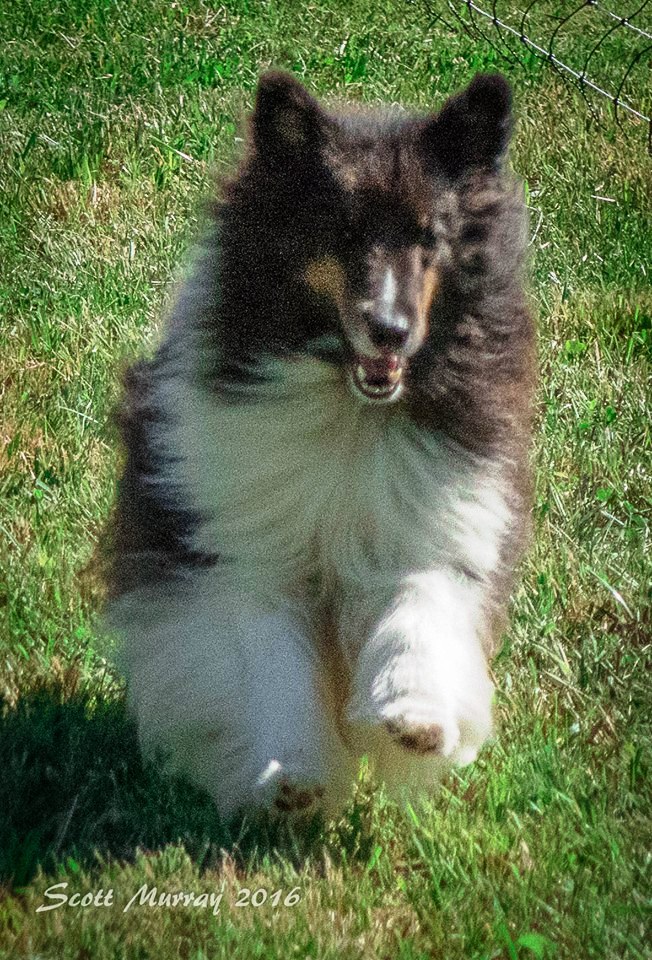Dog Safety Begins With YOU!
No matter how well trained a dog is, safety begins with you. Remember, it something has a mouth, it can bite. How we behave around dogs decreases or increases the chance of being bitten.
Dogs You Live With
It is important to respect the dogs you live with. Dogs are not furniture or toys. No matter how large or how small, these are living beings.
Learn dog body language and never approach a fearful dog or one who is behaving like an out of control goofball.
Learn to play safer games with your dog. Games that teach dogs it is good to bite or jump on people are not safe. Safer games include hide and seek, back yard agility, nose games/scent work with food, older children and adults can learn how to use a flirt pole, trick training, etc., are all better ways to play with your dog.
Do not tease your dog or pull ears, feet or tails, lift up lips, etc. Parents, watch little kids. Many things they do out of curiosity or simply because they are little could push even a chill dog’s tolerance level to the end.
If your dog is chewing a toy, sleeping, or eating, has puppies, leave the dog alone.
Always ask a dog’s permission before touching. On the videos page is a good video on dogs giving consent to touch.
Pat on the chest or side. Hovering over a dog’s head, can be scary. Use slow motions and do not jerk away.
Hitting your dog, trying to show him who is boss, using training methods that are based in punishment will negatively affect your relationship with your dog. You want your dog to trust you and work with you because he wants to.
Learn how to meet your dog’s physical and behavioral needs. Learn what are normal behaviors for a dog and how to work with these behaviors.
Loose Dogs
Loose dogs are always a concern. Sadly, many dogs are loose due to irresponsible owners. Even if a dog is with an owner, the dog should be leashed. There is no such thing a a 100% trained dog. There will always be something that may cause a lapse in training.
Here is a little safety song for children to help them remember what to do if they see a loose dog. Click on the paw print.
It is important to teach children not to approach loose dogs - even if they know the dog or the dogs seems to be acting friendly.
They should always inform a TRUSTED adult if they see a loose dog.
Loose dogs should be reported to animal control. If you have people in your neighborhood who repeatedly let their dogs violate leash laws, you need to address this.
If a child is on a bike, scooter, skateboard, etc., teach the child to get off and walk. Fast moving things are more likely to attract attention and incite a chase. Slow and boring is better.
If a group of children is playing and a dog runs into the midst, it is important the kids stop, become silent and freeze. Kids racing up to the dog, screaming, running away, laughing, and such increases the risk. Then they should slowly walk away.
If a child has food and there is a loose dog approaching the child (or children), have the child drop the food and slowly back away. Hopefully the dog will redirect to the food.
Create a game plan of what to do when there is a loose dog in the area. Practice it so if a situation arises, hopefully your children will remember what to do.

Dog Owners
The first line of defense when it comes to dog safety lies with the owner. No matter the temperament of our dogs, we determine the safety level.
Genetics give us the ground upon which we build. The first step is choosing a dog that fits our lives and has a solid temperament.
Proper, positively-based training and careful socializing is vital. Many methods still recommended for training and socializing may suppress warning signals, increase the risk of undesired and reactive behaviors starting, and cause trouble down the road.
Manage your dog’s environment and work to keep him safe and others safe from him. Crates, gates, closed doors, leashes will help.
Never expect your dog, no matter how tolerant, to deal with anything a child or adult can do.
Learn stress signals, respect and advocate for your dog when he shows them.
Keep your dog healthy and properly groomed. Dogs who are not feeling well or uncomfortable (even things like sore mouths, overgrown toenails causing foot aches, not comfortable due to mats or fur that needs to be brushed out) are going to be less tolerant.
Senior dogs may be less tolerant of things, started faster, have more aches and pains and tire quicker. Respect the old timers.
Responsible dog ownership goes a long way when it comes to reducing dog-related incidents.
The Safe Kids/Safe Dogs Project
